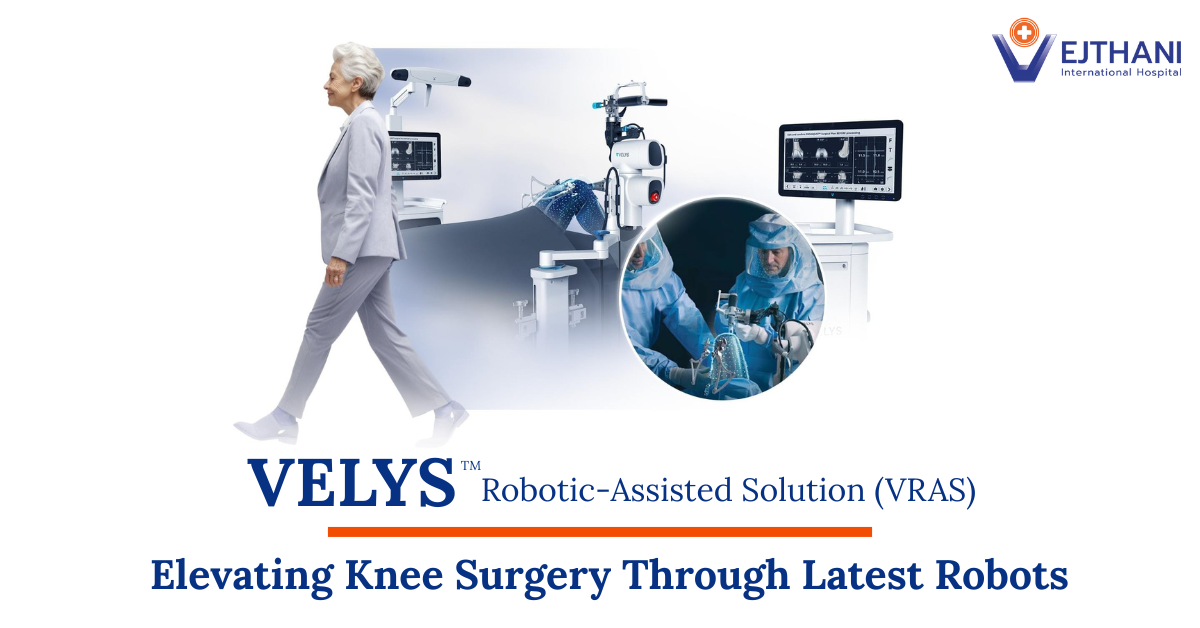
Health Articles
Computer Assisted Surgery / Minimal Invasive Surgery (MIS)
Computer Assisted Surgery in Total Knee Arthroplasty (CAS)
What is Computer Assisted Surgery? (CAS)
Why is it important for precise implant (prosthesis) placement?
How does Computer Assisted surgery (CAS) work?
Minimal Invasive Surgery (MIS) incorporated with Computer Assisted Surgery (CAS)
Computer Assisted Surgery in Total Knee Arthroplasty.
Total knee arthroplasty is a surgical treatment for severe knee joint degeneration or deformity. The surgery requires the removal of the pathologic joint articular surface and subsequent replacement with knee prostheses. Today, This procedure is very popular and well recognized or producing excellent clinical results for patients. In the United States, there are approximately 200,000 to 300,000 patients undergoing total
knee replacement annually. Increasing number of total knee replacements have resulted in the demand to improve surgical techniques. One of the long-term outcomes of this procedure is the mechanical wear of the prosthetic components; therefore, this limits the longevity of the knee replacement and a subsequent revision may be required. The revision may be more complicated and more costly than the initial surgery.
Patients are likely to have high expectations from total knee arthroplasty for eliminating knee pain and in the longevity of the procedure without the expectation for a subsequent revision. In the past, patients expected to get 5 to 10 years of effective use from a total knee replacement. Now, the expectation is 15 to 20 years or even up to 30 years. In previous years, knee replacement was seen typically in elderly patients. The demand for the surgery is now seen increasingly in younger patients with longer life expectancy.
Factors affecting prosthetic lifespan varies. Ones of the most important factors is the accuracy of prosthesis placement and the restoration of surrounding muscle and ligament balance. This relies mostly on the orthopedic surgeons skill and judgement.
However, research has shown that incorrect placement still occurs even the most skilled and experienced surgeons. The chance for incorrect prosthetic placement will be greater in a less skilled or inexperienced surgeon. Therefore, computer technology has been introduced to assist in more accurate positioning of prosthetic components, allowing the surgeons to make informed decisions intraoperatively for precise prosthetic placement. This allows physiologic muscle and ligament balance which is an important factor in prolonging the prosthetic lifespan and reducing the chances for an early revision arthroplasty.
What is Computer Assisted Surgery? (CAS)
Computer Assisted Surgery (CAS) is an innovative way to assist in orthopaedic surgery. A three dimensional (3D) image of the patients knee is created by entering in patient data. The software will generate a digital model if each patients knee joint. Additionally, the software will provide extremely detailed data relating to the bones and surrounding soft tissues.
There is no need for either X-rays or CT scans. This benefits the patient since no radiation exposure is involved. An infrared technology is applied to produce a moving digital image of patients joint as it is moved during the operation.
CAS is incorporated with software to process images real time. A digital model is produced that serves as a map for each particular procedure. The image is then made available to surgeons to guide them through the operation. Surgical instruments can be incorporated into the map so that instrument position, attitude, and progress can be monitored and controlled to within fractions of millimeters. Surgeons can use this real-time data to correct the procedure intraoperatively. This is much different from non-CAS surgery as the prosthetic evaluation by X-ray is done post-operatively. Should there is any incorrect prosthetic alignment, there is a greater likelihood if requiring a subsequent revision. There is a greater risk for post-operative complication as well as increased costs. In this case of incorrect prosthetic alignment from non-CAS surgery, the patient and physician must accept the surgical outcome, including the likelihood of shortened total knee arthroplasty lifesapan.
Why is it important for precise implant (prosthesis) placement?
Determining Proper Position
and alignment before surgery
Precise prosthesis placement
Inaccurate angulation and alignment of prosthetic component
Orthopedists who perform your knee joint replacement is like your house builder. If you want your house to be long lasting and durable, it needs to be properly positioned on a level foundation in order to bear the weight of the building. If the builder carelessly builds on an uneven foundation, the house may eventually till and collapse. That is why the builders skill along with the most up to date instruments are very important.
In knee joint replacement, orthopedists needs to remove the pathologic articular surface of the knee joint and fit the surface for the placement of an implant. If the proper angulation or alignment of the prosthetic component is done, the lifespan of the prosthesis will also be enhanced.
Research shows that malalignment of prostheses can cause the malfunction of the knee joint with resultant knee pain. It can also accelerate the wear of prostheses, predisposing to prosthetic component loosening. Malalignment in the range of as plus/minus 3 degrees has been shown to increase the incidence of prosthetic loosening occurs, revision surgery is required. It is apparent that orthopedists place great importance on the correct positioning of prosthetic components.
There have been attempts in the past to develop an instrument assisting in correct prosthetic placement. However, inadequate prosthetic placement is still a common problem, especially for less experienced surgeons who are more likely to incorrectly position prostheses. Consequently, development into improved techniques has been continuing.
The computer interprets and displays information thoughout the procedure
How does Computer Assisted surgery (CAS) work?
The principle of CAS is straightforward. A similarity can be drawn between CAS to assist in surgery and GPS to assist with navigating and route planning. Both provide a means for getting to the next stage, ie. In providing accurate positional information that allows better decision-making.
Accurate navigational systems are used to establish the safety of aircraft around the world and also in satellite telecommunications. It provides a roadmap in an accurate and timely manner. In CAS, a rapid technologically advanced data processor is used to receive and deliver data to assist the orthopedic surgeon in making the best decisions.
A sensing device is attached to the patients knee for patient data registry and an infrared camera will help receive the data for processing and create each patients digital model. The software contains data for various types and sizes of prostheses,
The computer will then assist the surgeon with enough information to prepare the best bone bed surface each particular type of prostheses, as well as assisting the surgeon in choosing the optimal prosthetic size for the patient. The surgeon will then apply the data from the CAS system to shape a fitted bone bed. CAS also helps in monitoring the accuracy of the bone bed shape preparation. If there is a malalignment, timely correction can be performed right away. The latest version of the software enables the surgeon to determine the balance of the surrounding ligament and muscle. The ultimate goal is for optimum functionality and durability over time.
Minimal Invasive Surgery (MIS) incorporated with Computer Assisted Surgery (CAS) [MIS & CAS]
Presently, a new procedure of Minimal Invasive Surgery (MIS) is widely recognized as it produced minimal incision and enhances cosmetic results. However, there are some drawbacks due to the minimal incision: visibility inside the incision is limited, resulting in a greater chance for incorrect placement of the prosthesis with consequent wear and loosening. Even in highly experienced surgeons, a greater chance of inadequate prosthetic placement still exists with MIS.
That is why CAS must be incorporated with MIS if adequate results are expected. When CAS is applied with MIS, the surgeon can see through the incision using a CAS monitor, enhancing visualization and surgical accuracy. The likelihood of prosthesis malalignment will then be reduced. It is believed that CAS in conjunction with MIS is a promising area in orthopaedic sugery.
CAS is now the latest technology in correct surgical decision-making.
This innovation, CAS, is now available at Vejthani Hospital.
For more information, please contact: Vejthani TJR Center






















